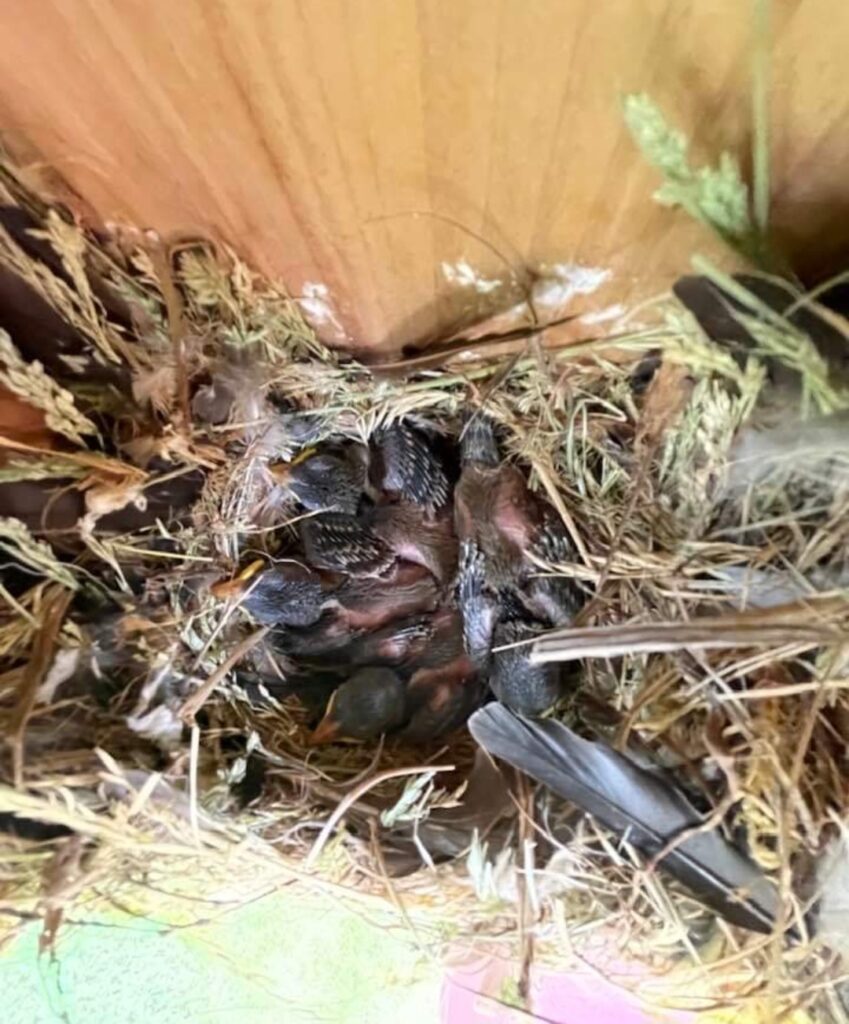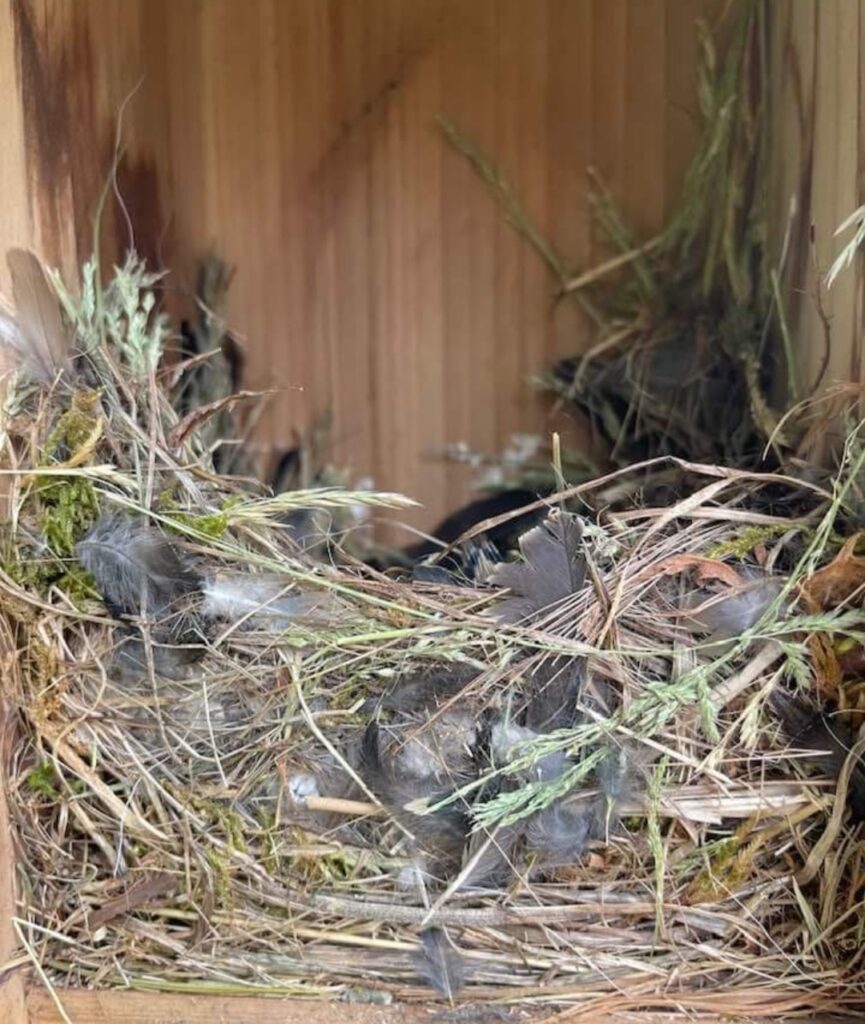Quick Tips: Just because it’s online doesn’t mean it’s true. Check sources, rely on books, knowledgeable, experienced landlords and your local, state and national bluebird organizations. Don’t believe everything you see online. And when trying to help others, stay in your lane.
Today I was cruising one of many Facebook sites on bluebirds, and I noticed a post that said “Good afternoon friends, ID on these babies please and thank you!” with the following photo. There were a number of replies, one from a “top contributor” that said “By nesting materials, I would guess chickadees.” 
I requested a side photo of the nest, but these were CLEARLY NOT chickadee nestlings. Yes, there was a bit of moss in the nest, but it was probably from a chickadee who started to build but the box was subsequently taken over by another bird – in this case House Sparrows, as is evident by the messiness, tell-tale grass seed heads, feathers, etc. For me, the side photo was conclusive.
Others proceeded to suggest Tufted Titmouse, and Nuthatch, despite the fact that the nest and nestlings look NOTHING like either. One posited Tree Swallows because of the presence of feathers (which Tree Swallows usually arrange in a much different manner, underneath and recurving over eggs/nestlings.)

Some of the other commenters were correct in their identification. One appropriately reminded the box owner that it is important to be absolutely CERTAIN that nests, eggs, nestlings or adults are indeed House Sparrows, which are not protected by law, before taking action to evict/destroy them.
Others reminded the poster how important it is to regularly monitor nestboxes, although unfortunately one said so in a bullying manner. The person WAS trying to avoid making a mistake.
***

On this same Facebook site, a commenter told another poster that the nest pictured above was a CHICKADEE nest… with blue eggs, in a nest made of grass, in a clematis? (Although they did correctly guess that the larger brown spotted egg was deposited by a cowbird.) Black-capped chickadee eggs have pinkish/mauve spots, and nests are typically primarily constructed of moss in cavities.
I’m not trying to embarrass anyone, but spreading misinformation is not good for the birds we are trying to help. We ALL make mistakes. We are ALL learning. But we need to try to learn from people who know what they are talking about.
“Ignorance is bold, knowledge reserved.” – Thucydides
NOTE: Exercise care when using Google or other Artificial Intelligence (AI) to answer a question. AI scrapes information from billions of sites on the Internet and may pull from unreliable or unverified sources. The New York Times reported that “When asked “how many rocks should I eat,” for example, A.I. Overviews told some users to eat at least one rock a day for vitamins and minerals.” This answer was taken from The Onion, a spoofing satirical site. Another user was advised that the way to keep cheese from sliding off a pizza was to add 1/8 of a cup of glue to the sauce.
MORE INFORMATION & RESOURCES:
- Resources & Links
- Accuracy on Sialis.org
- Books on Bluebirds
- State, Local and National Bluebird Societies
- Nest ID
- Never Say Never
- House Sparrow Control
- Monitoring Nestboxes
- Do No Harm
